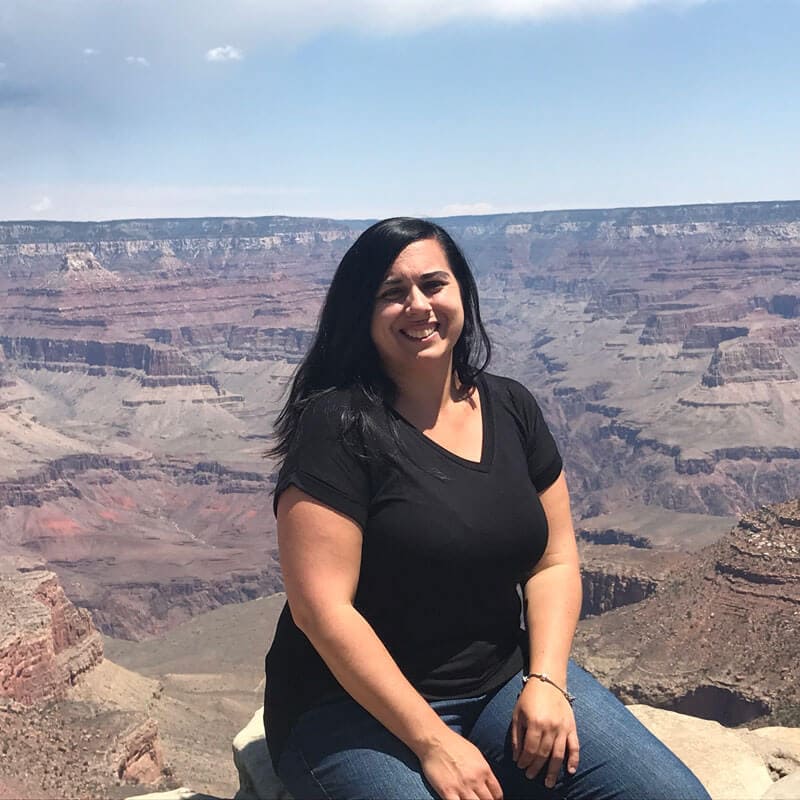What were you doing before Instructional Design?
Previously, I was a software engineer. All that was great when you’re single and don’t have kids. But in the last few years, I have got married and I now have two bonus kiddos and a baby. I made it to the software engineer III level, but this is where you become responsible for managerial roles, and I was finding that a lot of my free time was spent doing really complex, stressful things with negative energy. As I got into the higher level, I realized that it was taking from my family, so my husband and I were trying to figure out what else I could do with my skills.
What made you decide to join Applied Instructional Design Academy (AIDA)? Did you have any hesitation about joining?
At the beginning of this year, in January, 2022, I had zero idea what ID was. A post showed up in one of the black women in technology Facebook groups that I was in. The post mentioned AIDA and instructional design. It was just this little blurb about how amazing it was to be able to work remotely developing e-Learning. The person posting was talking about how she had four kiddos and she was a single mom at the time, and how she was able to successfully transition from teaching to ID. She was heavily emphasizing the fact that she was, at this point, making six figures with the contracts that she had. One of my biggest hesitations with leaving software engineering was wondering if I would be able to make what I was making without having to work as hard. I wanted to rely on things that came easier to me and I wanted to be more available for my family, so I decided to explore.
I immediately signed up for the Instructional Design Jumpstart workshop based on that post, but when I found out how much the program was going to cost, I hesitated. I was still doing the software engineering thing. I also had a business that I was starting and there was a lot going on. I thought I wasn’t arsty and creative enough, and I didn’t know that it would be worth the investment at that point in time, so my thought was, “I’ll listen and maybe this later.”
Throughout the workshop, I learned what ID was, more about AIDA and what it provided in terms of being able to help you make the transition. My selling point was when Jill mentioned that we were going to be learning all the tools and skills that we needed to get into ID. Buying all the tools on our own would be about $2,000. I’m the type of person that would figure out how to accomplish my goals but I wanted to be successful quickly. I was hearing all of these stories about people who were able to go straight from finishing the program, or even still being in the program to being hired immediately. I thought, that is the rate of success that I’m looking for, with a family relying on me and my income. I didn’t have the opportunity to fail so I was looking for the investment that would guarantee the most success.
What attracted me is seeing the number of people who have gone through this program and been hired and that it wasn’t just because they were teachers. I think at the time, I was hearing a lot of teachers go into ID. It made a difference for me to know that there were other people who were not teachers who were also able to benefit from the program. There are a lot of things that I’m seeing that carry over if you do have a teaching background, but if you have other experience, what I’m getting from the recruiters is they feel that there is a whole picture difference that makes me stand out in particular because of my corporate background.
What was your experience like in Applied Instructional Design Academy?
I started the program in January. I had my little girl the previous July. I was on maternity leave for four or five months, so I had just started back at work in December. I picked up AIDA in January, and I was working and doing AIDA, and the side business. There was a lot going on in my life. I realized that I wasn’t going to be able to keep up with this pace, so I was going to have to make a choice. I was having some issues at work. Again, software engineering is very demanding, especially at S3 level. There wasn’t enough of me to go around for everybody. I decided, if I’m trying to do this transition, I need to focus on knocking out as much of AIDA as possible.
I took a week off to focus 100% on AIDA. By the end of that week, I was thinking that it would be really great if I could get another one. I asked for one more week. They said no, so at that point I made a choice to resign. Do not do that if you are not prepared for what comes with that. I was under pressure to make this work quickly because I had so much financial stuff to make up. I had no choice but to push through AIDA as quickly as possible and start applying.
I worked through as much of the content with AIDA as I could. I was burning the midnight oil. Sometimes I spent all-nighters working on AIDA to make sure that it got done. I was coming to every coaching call that I could, and I was bringing my latest version and getting feedback on that. There’s a whole process and it’s so awesome to have this community of people who are going through it with you. I went from no resume that’s ID related, no portfolio in existence at all, no samples, none of that, to having all of that.
The first thing I did was try to get my regular software engineering resume to be ID appropriate. There were all these resources in AIDA to help identify what you’ve already done and apply the terminology, the ID lingo, to your experiences. As I was doing this, I was realizing that I actually have way more training experience than I thought.
I was working against the clock. I was trying to make sure that I didn’t miss a paycheck. I think there was a fear for me, thinking “I have to hurry because there are not enough opportunities to go around.” I don’t know why I thought that. I was stressing myself out unnecessarily. Training is needed everywhere in every field. Plus, the people inside the AIDA Facebook group share opportunities if they get multiple offers or there’s something that came to them that doesn’t match what they’re looking for. People are literally sharing in the AIDA group , “Hey, I know this hiring manager, this is who you would speak to, and these are the things that they’re looking for.”
What are you doing now?
With all of the places that I applied to, it was a long journey. I went from having no one calling, to some recruiters who were interested in me specifically because my background was different. They weren’t used to people going from software engineering to ID. That could have turned into interviews, but I didn’t have a finished portfolio, so I was seeing no follow up. Once I started getting my samples together with AIDA and putting them on the portfolio, there was a turning point. By the end of that first month that I was applying, I had my first offer.
Within that period of time, I had a very limited number of interviews. But then in those last two weeks, I had more interviews and the first offer I received moved fast. I accepted the first one because I was thinking that people stack contracts anyway. I did not expect that so many interviews would come after I got that first offer. I was going to respectfully finish out the interviews that were already scheduled, knowing that I may be looking for more work later because the first one was just a contract. I did not expect to have five offers by the end of it. I had to turn down offers and turn down interview requests. That was super validating to me that AIDA was the greatest choice that I could have made, because again, I’m still in the program at this point, about five months in.
I heard a lot of people from AIDA had started contracts for a few months and then moved to something else, and they became senior level within months to a year. That’s how they pushed towards that whole six figure range, which is where I was trying to go. I wasn’t trying to lock myself into something low either. Once you get your first position, it’s a starting point in the conversation for other negotiations.
One last thing about accepting that first offer, for transparency: I did start it and I was there for a month. I was not super happy with turning down offers that were significantly better. So I talked to Jill, and I felt less guilty about leaving. Apparently, there’s no obligation for you to stick it out if you don’t want to, so I did put in a notice. My last day was on Friday. I’m supposed to start the next one tomorrow. As I was wrapping up my current contract, they were so saddened by my departure. They asked, “If this doesn’t work out, can you come back?” This is my first ID job and apparently, I did such an amazing job compared to what they expected.
How has your life changed?
AIDA was the best path possible for me. I thank you for this whole program for being a thing in my life. Now, in interviews, hiring managers are just like, “What can we say to you to make you accept our offer over other people’s offers?” Having the corporate professional background was already a nice-to-have, so that’s why they’re willing to pay more. I have the training from AIDA that everybody will have. The hiring managers that I’m talking to feel the benefit is that not only am I trained, but they don’t have to walk me through corporate culture. They can put me straight on a team and that’s what they’re looking for. They want to hire right now. They want you to be able to hit the ground running.
Again, use your strengths, your uniqueness, identify what makes you special, and that is your brand that you need to go out into the world with. I didn’t have everything together. I was still in the program. I still had four months left to go technically. There was still so much to learn, I didn’t feel like I could call myself an ID at that point. AIDA is the sole reason why I was able to do this transition successfully.
I hear about the people who apply for these jobs who are not getting this hands-on training and coaching. When you do AIDA and get in front of the hiring managers, they can’t believe this is your first ID job. They’re just like, “Where did you get all this from?” They’re very curious and they want to know more about AIDA. They put that information away for next time, or if you’re turning it down, I’m just like, “Hey, I can’t accept this, but I do have a community of other ID students who are looking for work. Is it okay if I pass this along?” And they’re just like, “Yes, please. Please do that.”






